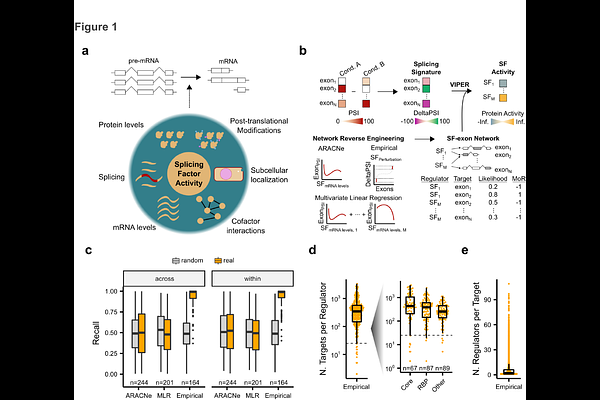Disentangling the splicing factor programs underlying complex molecular phenotypes

Disentangling the splicing factor programs underlying complex molecular phenotypes
Anglada-Girotto, M.; Moakley, D. F.; Zhang, C.; Miravet-Verde, S.; Califano, A.; Serrano, L.
AbstractThe regulation of exon inclusion through alternative splicing tunes the cell\'s behavior by increasing the functional diversity of the transcriptome and the proteome. Splicing factors work in concert to generate gene isoform pools that contribute to cell phenotypes yet their activity is controlled by multiple regulatory and signaling layers. This hinders identification of functional, phenotype-specific splicing factors using traditional single-omic measurements, such as their mutational state or expression. To address this challenge, we propose repurposing the virtual inference of protein activity by enriched regulon analysis (VIPER) to measure splicing factor activity solely from their downstream exon transcriptomic inclusion signatures. This approach is effective in assessing the effect of co-occurring splicing factor perturbations, as well as their post-translational regulation. As proof of concept, we dissect recurrent splicing factor programs underlying tumorigenesis including aberrantly activated factors acting as oncogenes and inactivated ones acting as tumor suppressors, which are undetectable by more conventional methodologies. Activation and inactivation of these cancer splicing programs effectively stratifies overall survival, as well as cancer hallmarks such as proliferation and immune evasion. Altogether, repurposing network-based inference of protein activity for splicing factor networks distills common, functionally relevant splicing programs in otherwise heterogeneous molecular contexts.